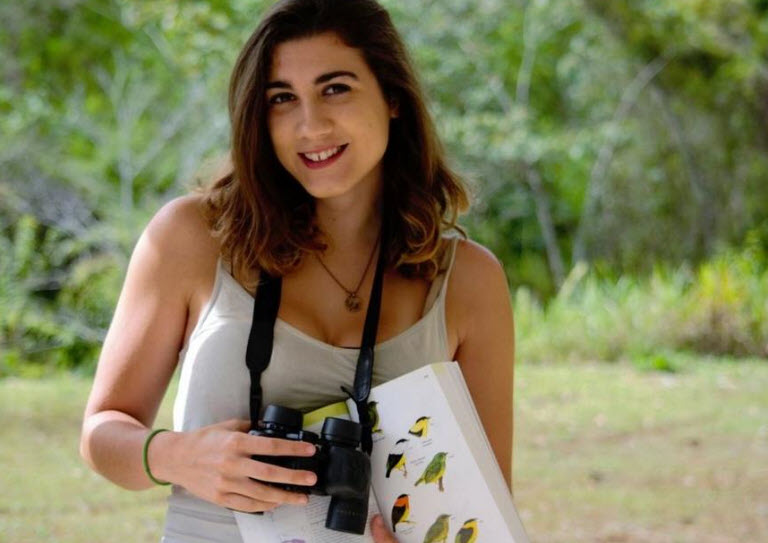Elena Prado-Ragan writes of her adventures of bird study here in Panama.
My name is Elena Prado-Ragan, and I am a bird nerd. I often get asked to name my favorite bird, a question I can never answer. Between bee hummingbirds weighing the same as large paper clips, ostriches taller than Michael Jordan, puzzle solving crows, dancing riffle birds, talking parrots, diving peregrine falcons, and elegant birds of paradise, I am totally stumped. I find picking favorites especially challenging since there are around 10,000 bird species to choose from, each one unique in personality and behavior. I adore them all, and hope to dedicate my life to studying birds. I want to protect them, and in turn share what I learn about their intelligence and beauty with people who will listen.
I have lived about half my life in Galesburg and the other half abroad due to my parents profession. I spent my sophomore, junior, and a little bit of my senior year at GHS. I graduated early in December of 2014, and then started going to Knox the following January. I am now a recent graduate of Knox College, having finished my bachelors in December of 2018. Knox does not offer a program in bird studies (aka ornithology), but I majored in the next best thing, Biology. With the help of my professors, advisors and recommenders I was able to gain enough experience to get to where I am now, Bocas del Toro, Panama. I found this position on a job board specific to those looking for bird work. Thanks to my previous research experience, my brief work as a Spanish language interpreter, I was lucky enough to get my current job.
I was hired by PhD student Kira Long as one of her two assistants on her project studying the hybridization between the golden collared and white collared manakins, small colorful birds that dance, sing and breed in the mangrove forests of Panama. Kira and her program advisor at the University of Illinois are interested in why these two species of manakins seem to want to interbreed and if the hybrid population is growing. To do this, we have to bird band–the practice of setting up special bird safe nets known as “mist nets”, which are spaced appropriately and droop down to form pockets so that birds do not strangle or hurt themselves. We take the birds out of the nets, fit them with ankle bracelets assigned with a unique numerical code, and take a small blood sample, which is then analyzed in a laboratory so that we can gather genetic information. I will be assisting Kira for 5 months, and in the meantime hope to photograph not just birds, but all wildlife, food, people, landscapes, art, or anything captivating so that I can share it with viewers and readers.
Panama has some of the highest biodiversity in the world, as do all countries/territories that exist in the tropics. In Panama alone there approximately 1,000 bird species, more than in North America. The rainforests is teeming not just with birds but with countless plant, fungus, insect, reptile, amphibian, and microorganismal species. The STRI or Smithsonian Tropical Research Institute is located near Panama City, and scientist from all over the world come to study and protect the species found here. In Panama there are only two seasons, the wet and the dry, and the temperature stays between 70 and 80 degrees year round. The rainforest is always alive, providing ample opportunity to photograph and document all sorts of curiosities. I hope to share snippets of my experiences with those in my community, since I am indebted to everyone that has encouraged and supported my passion for wildlife. Most importantly though, I hope that my pictures will inspire everyone back home to travel and to step out of their comfort zones. The unfamiliar can be magical and absolutely electrifying. I will try to convey this and to encourage travel and exploration through my photography to the best of my abilities.
